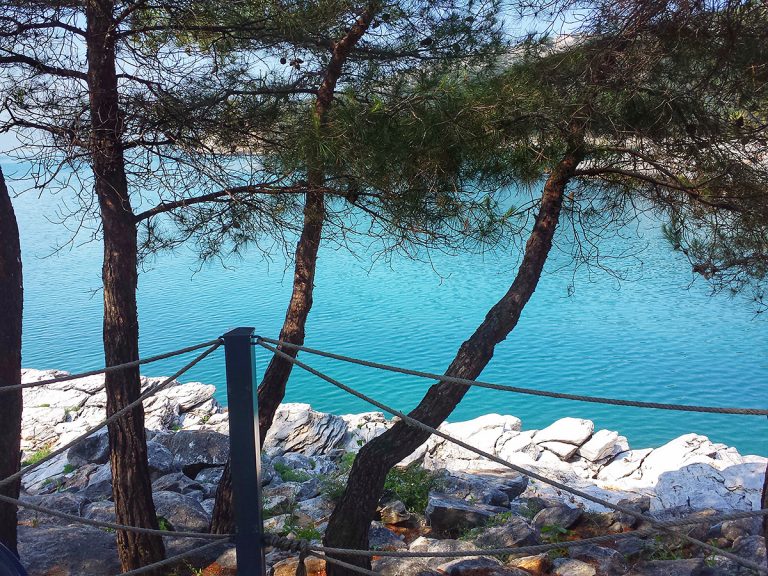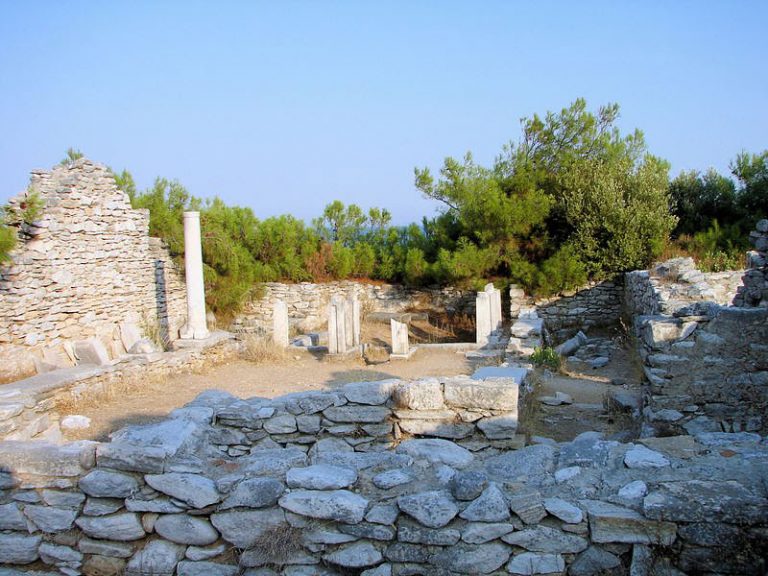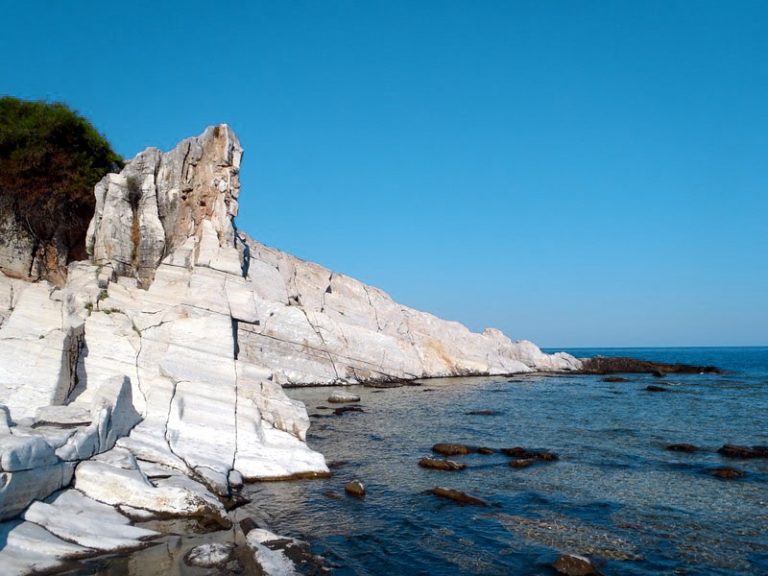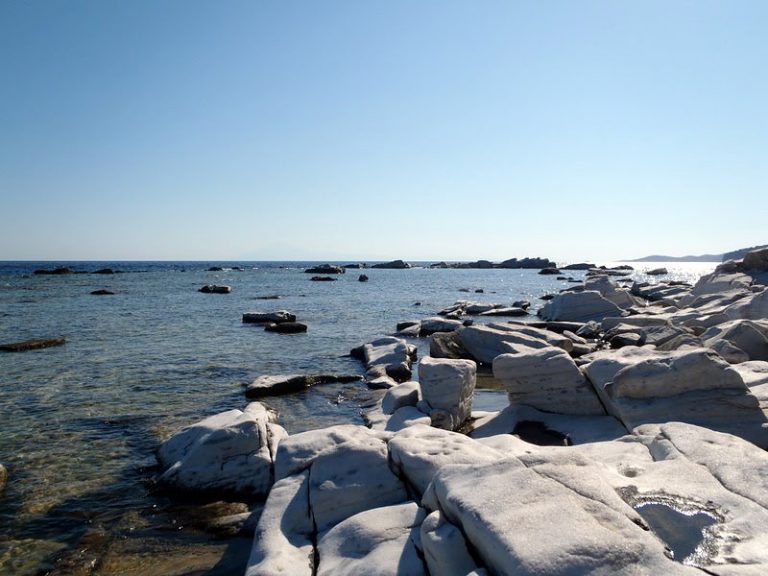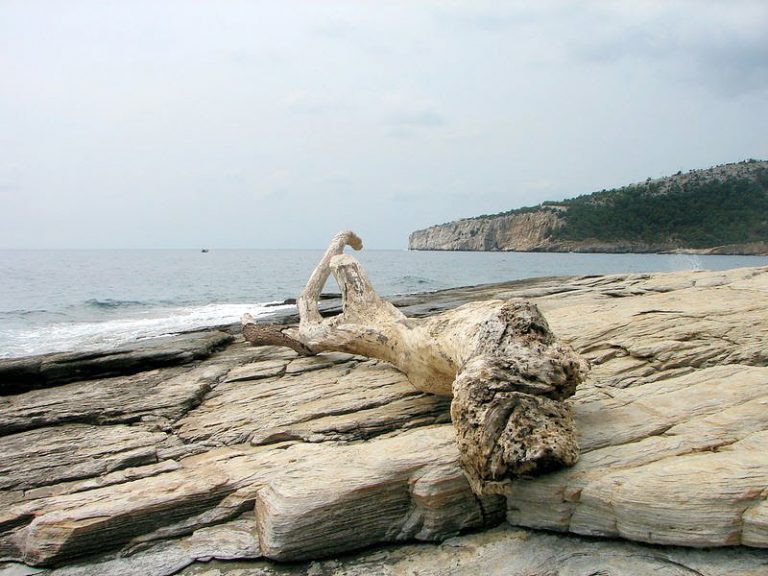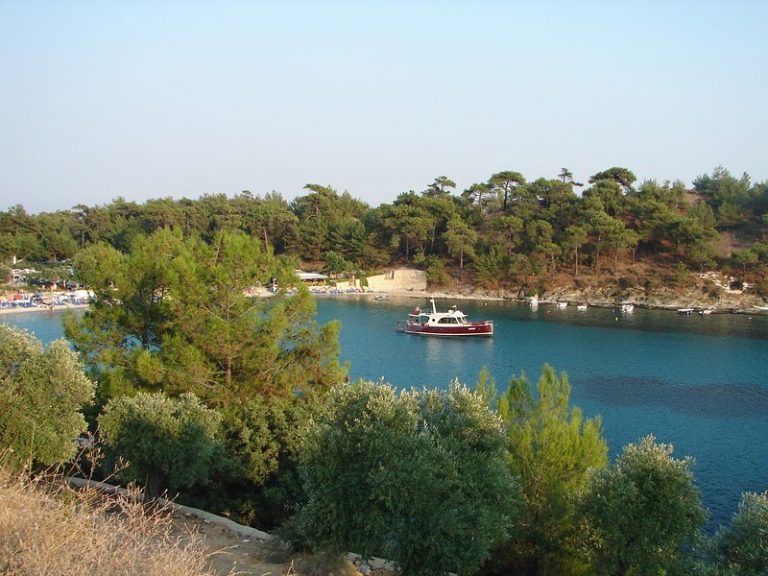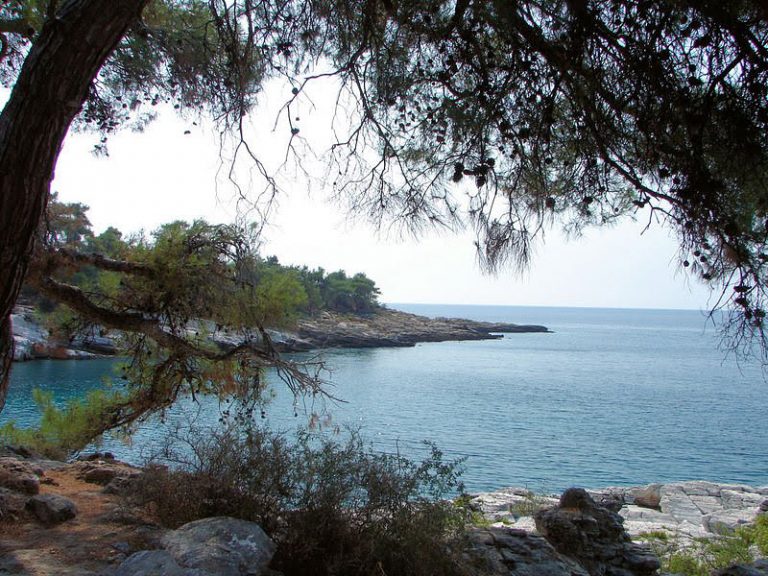thassos island
history
Thassos or Thasos (Greek: Θάσος) is a Greek island in the northern Aegean Sea, close to the coast of Thrace and the plain of the river Nestos but geographically part of East Macedonia. It is the northernmost Greek island, and 12th largest by area. Thassos is also the name of the largest town of the island (also known as Limenas Thassou, “Harbour of Thassos”), situated at the northern side, opposite the mainland and about 10 kilometres (6 mi) from Keramoti.
prehistory
Lying close to the coast of Eastern Macedonia, Thassos was inhabited from the Palaeolithic period onwards, but the earliest settlement to have been explored in detail is that at Limenaria where Middle and Late Neolithic remains have been found that relate closely to those of the Drama Plain. In contrast, the remains of the Early Bronze Age on the island align it with the culture that developed in the Cyclades and Sporades to the south in the Aegean. Even earlier activity is demonstrated by the presence of large pieces of ‘megalithic’ anthropomorphic stelai built into these walls, which, so far, have no parallels in the Aegean area.
There is then a gap in the archaeological record until the end of the Bronze Age c 1100 BC, when the first burials took place at the large cemetery of Kastri in the interior of the island. Here built tombs covered with small mound of earth were typical until the end of the Iron Age. In the earliest tombs were a small number of locally imitated Mycenaean pottery vessels, but the majority of the hand-made pottery with incised decoration reflects connections eastwards with Thrace and beyond.
antiquity

Samples of rock carvings
© Archaeological Museum of Thassos

Thassos Stater
A silver One-8th-Stater from Thassos with a Satyr running right, circa 500-463 BC, SNG Copenhagen.
The island was colonized at an early date by Phoenicians, attracted probably by its gold mines; they founded a temple to the god Melqart, whom the Greeks identified as “Tyrian Heracles”, and whose cult was merged with Heracles in the course of the island’s Hellenization. The temple still existed in the time of Herodotus. An eponymous Thassos, son of Phoenix was said to have been the leader of the Phoenicians, and to have given his name to the island. Around 650 BC, or a little earlier, Greeks from Paros founded a colony on Thassos.
Thasian power, and sources of its wealth, extended to the mainland, where the Thasians owned gold mines even more valuable than those of the island; their combined annual revenues amounted to between 200 and 300 talents. Herodotus says that the best mines on the island were those opened by the Phoenicians on the east side of the island, facing Samothrace. Archilochus described Thasos as “an ass’s backbone crowned with wild wood”.
The island’s capital, Thassos, had two harbors. Besides its gold mines, the wine, nuts and marble of Thassos were well known in antiquity. Thassian wine was quite famous. Thassian coins had the head of the wine god Dionysos on one side and bunches of grape of the other. Thassos was important during the Ionian Revolt against Persia. After the capture of Miletus (494 BC) Histiaeus, the Ionian leader, laid siege. The attack failed, but, warned by the danger, the Thassians employed their revenues to build war ships and strengthen their fortifications. This excited the suspicions of the Persians, and Darius compelled them to surrender their ships and pull down their walls.
After the defeat of Xerxes the Thassians joined the Delian confederacy; but afterwards, on account of a difference about the mines and marts on the mainland, they revolted. The Athenians defeated them by sea, and, after a siege that lasted more than two years, took the capital, Thassos, probably in 463 BC, and compelled the Thassians to destroy their walls, surrender their ships, pay an indemnity and an annual contribution (in 449 BC this was 21 talents, from 445 BC about 30 talents), and resign their possessions on the mainland. In 411 BC, at the time of the oligarchical revolution at Athens, Thassos again revolted from Athens and received a Lacedaemonian governor; but in 407 BC the partisans of Lacedaemon were expelled, and the Athenians under Thrasybulus were admitted.
After the Battle of Aegospotami (405 BC), Thassos again fell into the hands of the Lacedaemonians under Lysander who formed a decarchy there; but the Athenians must have recovered it, for it formed one of the subjects of dispute between them and Philip II of Macedonia. In the embroilment between Philip V of Macedonia and the Romans, Thassos submitted to Philip, but received its freedom at the hands of the Romans after the Battle of Cynoscephalae (197 BC), and it was still a “free” state in the time of Pliny. It is related, that Byzantine Greek Saint Joannicius the Great (752–846) in one of his miracles freed the island of Thassos from a multitude of snakes.
ottoman era
Thassos was part of the Eastern Roman Empire, later known asByzantine Empire. It was captured by the Turks in 1462. Under the Turks the island was known as Ottoman Turkish: طاشوز Taşöz. A brief revolt against Ottoman rule in 1821, led by Hajiyorgis Metaxas, failed. The island was given by the Sultan Mahmud II to Muhammad Ali of Egypt as a personal fiefdom in the late 1820s, as a reward for Egyptian intervention in the War of Greek Independence (which failed to prevent the creation of the modern Greek state). Egyptian rule was relatively benign (by some accounts Muhammad Ali had either been born or spent his infancy on Thassos) and the island became prosperous, until 1908, when the New Turk regime asserted Turkish control. It had the status of a sanjak in the vilayet of Salonici (Thessaloniki) until theBalkan Wars. On October 20, 1912 during the First Balkan War, a Greek naval detachment claimed Thassos as part of Greece, which it has remained since.
book now!
Thassos doesn’t have an airport; although its served by the Great Alexander Kavala’s airport, near the port of Keramoti. You can reach Kavala and/or Keramoti through Egnatia Street.
The possibilities offered to you are:
- Whether you arrive Keramoti from where depart regular ferry boat service to Limenas, Thassos. Your journey will take only 25-30 minutes (6 nautical miles away). Kekes Beach is only 32 km from Limenas and you can have the local bus to get there.
- Whether you reach Kavala from where you can take the ferry to Prinos, Thassos. Prinos is 12 miles away (about 75 minutes). Kekes Beach is 45 km far away from Prinos using the local bus. Flying dolphins are also available from Kavala, running fast and comfortable route Kavala – Limenas, Thassos.
The roads on the island are paved. The main regional artery 100 km in length and is called “tour of the island”. In the transportation Thassos is served by local buses, go round the island, reach all the villages and beaches and still have connections with ferry boats.




